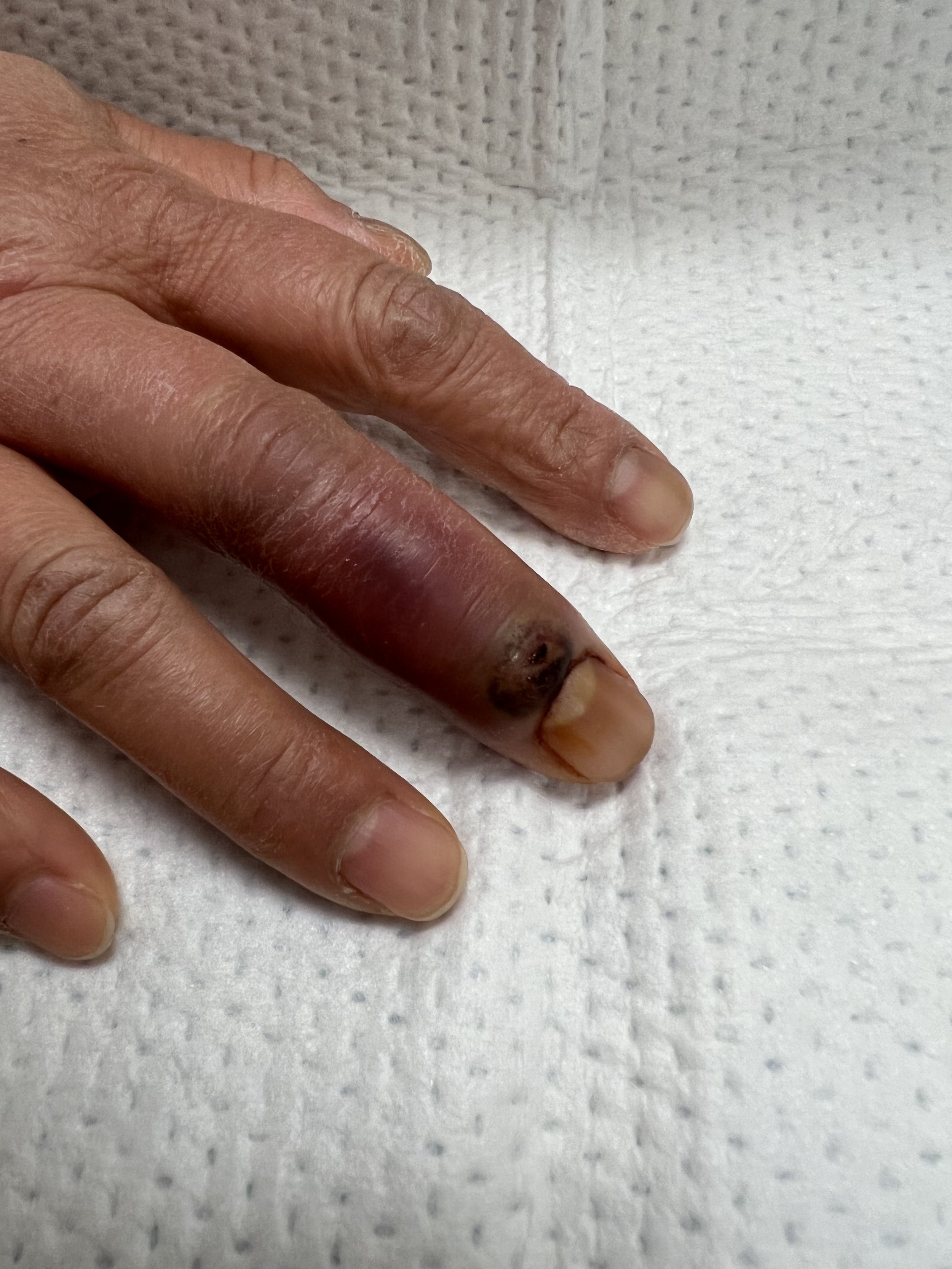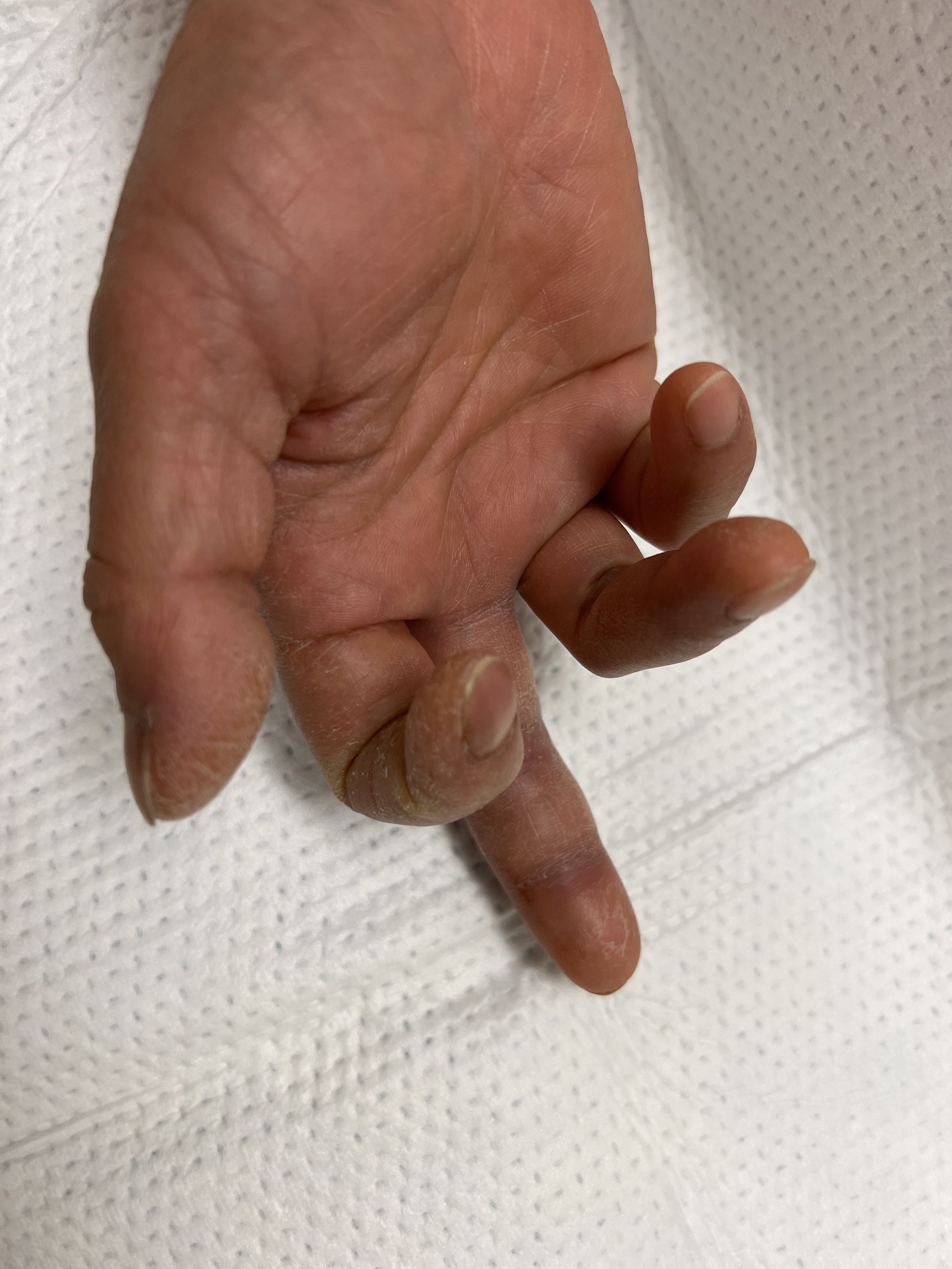Code Paronychia!
Paronychia is a rather common and often painful and annoying digit infection that frequently brings patients to the ED in search of relief. Most infections are minor and can be treated easily with rather conservative methods, but occasionally surgical intervention or other aggressive or prolonged therapies are required.
Importantly, the neglected or mismanaged case can end up a disaster. There are surprisingly few objective data in the medical literature dealing with the treatment of this common problem, probably reflecting the fact that most patients do quite well. I could not find a single prospective study that evaluated treatment protocols or outcomes, and even review articles or textbooks are often superficial or incomplete. I have been impressed, however, that some of my colleagues, and even often quoted textbooks, tend to recommend an overly aggressive approach to what is usually a simple problem with a simple solution.
When dealing with a paronychia, as with any infection involving the hand, it is paramount for the clinician to know when to be aggressive and when to be conservative.
Clinically it first appears as a cellulitis, and if left untreated, can progress to an abscess. Once pus has localized, drainage can be accomplished relatively easily, and the patient experiences rapid relief of symptoms. Many cases seem to develop spontaneously, but some patients can recall an episode of trauma, such as a puncture wound. Children can develop a paronychia from sucking their fingers. The infection usually involves the fingers (especially the thumb and index finger), but the toes may be affected.
A chronic paronychia can develop, particularly in individuals whose hands have repeated exposure to moisture and repeated minor trauma. The chronic form involves slow progressive swelling of the lateral or posterial border of the nail folds and scarring associated with discoloration or physical changes of the nail. Unlike an acute bacterial paronychia that generally involves a single finger, the chronic infection can affect a number of fingers simultaneously. Often it has a fungal component.
Careful local treatment is generally curative. Patients with a chronic paronychia should be investigated for yeast infections. Once cured, attention to local nail care can help prevent a recurrence. Failure to cure a paronychia rapidly should prompt specialized culture techniques, and proper referral.
A chronic paronychia caused by fungal infections should always raise the possibility of immunosuppression. A paronychia can be mistaken for psoriasis or Reiter's diseases. Tumors, such as squamous cell carcinoma or malignant melanoma, cysts, the primary chancre of syphilis, warts, or foreign body reactions can occasionally mimic a paronychia.
The Approach &
The Procedure
THE APPROACH
Digital Nerve Block with Incision and Drainage
THE PROCEDURE
Not all paronychia require a digital nerve block, but more angry-looking or aggressive digits may require adequate anesthesia. We will highlight digital blocks in future posts of The Procedural Pause.
• Start a warm soak with antibacterial soap when the patient arrives in triage.
• Lie the patient comfortably supine on the stretcher with his affected digit on a bulky towel.
• Wear a face mask; it helps prevent spreading bacteria while you investigate the wound.
• Complete appropriate digital nerve block to the affected digit. The patient will feel immediate relief, and it will allow you to manipulate the finger freely.
• Examine the eponychium. Determine which area appears the most engorged. Be sure to look for signs of a felon or subungual abscess.
• Most paronychia can be drained by simply lifting up the eponychium to drain the pus, rather than making an incision directly into the skin. A skin incision takes longer to heal and may seem like forever in a diabetic. Holding the blade or needle parallel to the nail bed (NOT at a 90-degree angle), lift up the edge of the eponychium and allow pus drainage. Use a No. 11 blade, scissors, or a 21- or 23-gauge needle.
• Fan the blade or tip of the instrument in the cavity to allow more drainage of pus.
• A wound culture is an option, but most don't need them because they get better with drainage, and infections are polymicrobial.
• Dab the area several times gently with gauze and apply moderate pressure on the nail bed and surrounding skin to improve drainage.
• A small piece of gauze packing may be placed under the eponychium for the first 24 hours, but this is most likely not needed. Consider for larger areas of disturbance. Pack similarly to any other abscess I&D.
• Apply topical antibacterial ointment and a bulky dressing. Consider bacitracin topical 500 units/g or mupirocin topical (2%) applied two or three times a day. This will also prevent the dressing from sticking to the wound.
• Dressing: A soft bulky dressing for a day or two will suffice if no packing is needed.
• A finger splint may also be helpful for the patient.
• Instruct the patient to keep the area clean and dry for 24 hours and return for packing removal (if any) in 24 to 36 hours.
• Remind the patient to complete warm soaks thereafter three to four times a day for the next two to three days.
• Antibiotics may be used for two to three days. A cephalosporin would be a reasonable choice, but infections are polymicrobial. Most who have good drainage do not need antibiotics. Instruct the patient to finish all antibiotics until completed.
• Describe signs and symptoms of worsening infection, and advise acetaminophen or ibuprofen for pain control over the next few days. Consider a few Percocet or Vicodin for the road.
• For added flair, you may consider referral to your local hand specialist for chronic infections. And we all know our friendly podiatrists always love new patients and the business for those affected with toe paronychia.
• Update the tetanus for completeness.
Watch our HOW TO Video here!
Watch our HOW TO Video here!
Take a moment to watch a <5 minute video on simple paronychia I/D from our hand specialists at San Fran General Hospital and Trauma Center.
CAUTIONS
• Contrary to belief, nail/skin cutting or removal is rarely indicated for most paronychia. It can delay healing so try to avoid this approach.
• If you start hot soaks early upon the patient’s presentation while in triage, you may see a significant improvement in just 20 minutes.
• Antibiotic use is subject to presentation. Be sure to cover for Staphylococcus. Consider gram-negative anaerobes, however, in young children or those with frequent nail biting.
• Also consider viral causes, including herpes simplex virus, which causes herpetic whitlow. A Tzanck smear will test for herpetic causes.
• Always check for a felon or cellulitis; suspect osteomyelitis.
• Antibiotics to consider: First generation cephalosporin such as cephalexin 500 mg qid for 7-14 days or antistaphylococcal penicillin such as dicloxacillin 500 mg PO qid 7-14 days. PCN allergy? Consider clindamycin 300 mg PO qid for 7 days. Diabetic patients may need extended day coverage.
• Presumed oral flora infection? Try amoxicillin-clavulanate (875/125 mg) bid for 7 days.
• High-risk jobs associated with paronychia include nail technicians, dish washers, chefs, and meat packers.
• Final precautions: osteomyelitis, septic arthritis, separation of nail plate from matrix.


